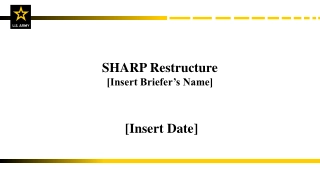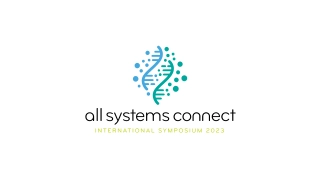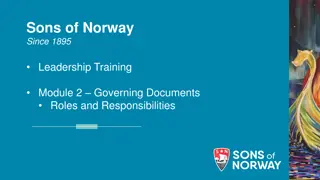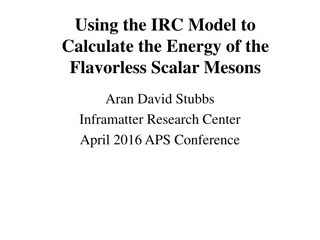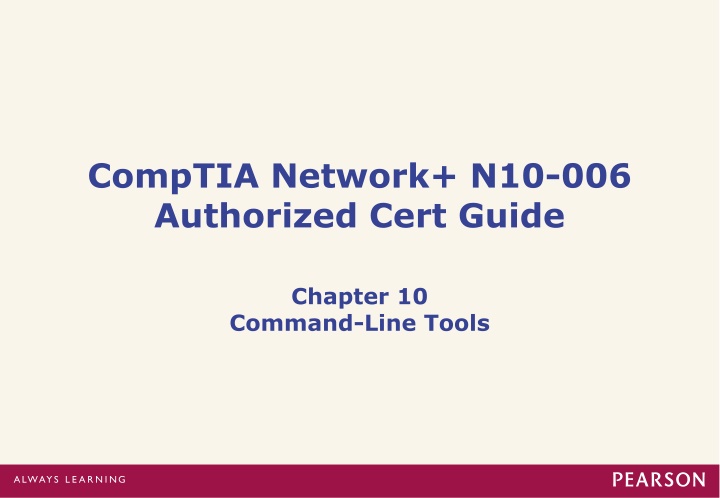
Network Configuration and Troubleshooting Commands for Windows and UNIX Systems
Explore essential command-line tools for configuring and troubleshooting network clients and servers on Microsoft Windows and UNIX platforms. Learn about commands like arp, netstat, nbtstat, ipconfig, ping, tracert, and route to enhance network management and connectivity.
Download Presentation

Please find below an Image/Link to download the presentation.
The content on the website is provided AS IS for your information and personal use only. It may not be sold, licensed, or shared on other websites without obtaining consent from the author. If you encounter any issues during the download, it is possible that the publisher has removed the file from their server.
You are allowed to download the files provided on this website for personal or commercial use, subject to the condition that they are used lawfully. All files are the property of their respective owners.
The content on the website is provided AS IS for your information and personal use only. It may not be sold, licensed, or shared on other websites without obtaining consent from the author.
E N D
Presentation Transcript
CompTIA Network+ N10-006 Authorized Cert Guide Chapter 10 Command-Line Tools
Foundation Topics Windows Commands UNIX Commands
Using Command-Line Utilities What are some of the more useful Microsoft Windows commands for configuring and troubleshooting network clients and servers? What are some of the more useful UNIX commands for configuring and troubleshooting network clients and servers?
Using Command-Line Utilities Configuring and troubleshooting networks involves issuing commands at an operating system (OS) prompt. Commands can be used on both clients and servers. Some commands exist on both Microsoft Windows and UNIX/Linux platforms.
Windows Commands arp displays the MAC address associated with a known IP address: arp -a Netstat displays information about IP-based connections on a PC. You can view information about current sessions, including source and destination IP address and port numbers.
Windows Commands nbtstat displays NetBIOS information for IP-based networks: nbtstat a o Displays the NetBIOS table of a remote PC nbtstat c o Displays a PC s NetBIOS name cache
Windows Commands Ipconfig displays IP address configuration parameters on a Windows PC: ipconfig /all o Provides additional configuration info ipconfig /release o Releases an IP address from the PC ipconfig /renew o Requests an IP address from the DHCP server
Windows Commands ping is used to check IP connectivity between two network devices: ping n 5 192.168.1.1 o Stops after five pings Tracert displays the path between your device (the source) and a destination IP address, showing each router hop: tracert 192.168.1.1 o Note: Switches are not in the hops.
Windows Commands route changes or displays contents of a PC s current IP routing table: route print o Displays the contents of the IP routing table route delete o Deletes an entry from the IP routing table nslookup resolves a fully qualified domain name (FQDN) to an IP address.
UNIX Commands man displays information on how to use a UNIX command (short for manual). arp displays the MAC address associated with a known IP address.
UNIX Commands nslookup and dig resolve FQDNs to IP addresses. o The dig command returns more information. host will also resolve FQDNs to IP addresses.
UNIX Commands ifconfig displays IP address configuration parameters. o Similar to ipconfig on a Windows device route n displays the default gateway. traceroute displays the path between your device (the source) and a destination IP address, showing each router hop. o Similar to tracert on a Windows device
UNIX Commands netstat displays information about IP-based connections. o View information about current sessions, including source and destination IP address and port numbers. ping checks IP connectivity between two network devices (by default, pings forever): ping c 5 192.168.1.1 o Stops after five pings
Summary Windows Commands arp nbtstat nslookup route ipconfig netstat ping tracert UNIX Commands man dig and nslookup ifconfig netstat arp host traceroute ping

